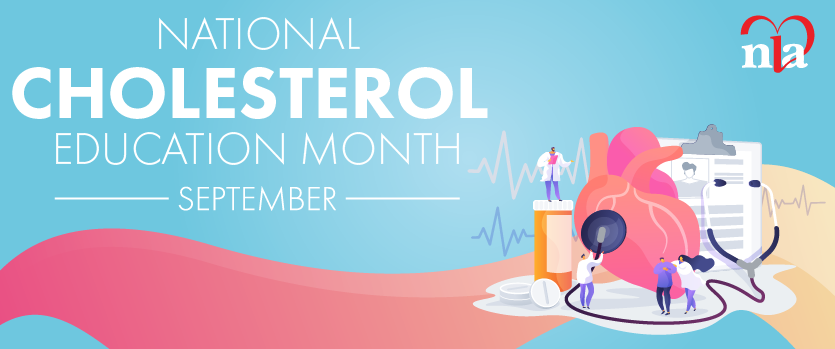What is DE&I equity?
Diversity, equity, and inclusion (DE&I) are popular terms that can be bewildering and even dismissed by many. At the core, the principles of DE&I emphasize human diversity in all forms, fairness despite differences or disparities, and inclusivity of gender, age, race, sexual orientation, variety of thoughts, and religion. DE&I is important to membership, clinical care and research. Many organizations are expanding to include a DE&I committee or officer. In this article, we discuss the National Lipid Association’s (NLA) support of DE&I and why these principles are now part of the mission statement and core values of the organization.
Why is DE&I important to the future of NLA?
Based on the current composition (Fig. 1A) the NLA membership may not be aligned with DE&I principles with respect to sex, race/ethnicity, and age, albeit there are positive trends in younger members (Fig. 1B). This, in turn, could affect the ability to retain members who may not see a role for themselves in the NLA, or who feel that they do not have the opportunity to impact the organization in a positive way. As a membership-driven association, the adoption of best practices in DE&I is critical to ensuring the NLA’s future as a welcoming organization, highly attuned to the evolving challenges of the professions it represents and the people we care for.
The DE&I Task Force embodies consideration for all aspects of the NLA’s operations, including internal and external communications, the composition of statement writing groups and regional/national committees and boards, and the development of conference programming and content. The future of health research (both basic sciences and clinical) requires that DE&I be considered in all phases of work, the Task Force will encourage constructive dialogue and development of shared teaching and learning opportunities for the NLA membership in this important area. For example, future programs will address the three major areas of focus identified by research funding agencies:
(1) systemic barriers in academic medicine that arise through lack of faculty diversity;
(2) lack of diversity and inclusion within research teams;
(3) and lack of consideration of diversity in the design of research projects and selection of clinical trial subjects.
Professionalism & Wellness for NLA members /Inclusion
The DE&I Task Force is committed to ensuring that every member feels fully respected and included, at every step of NLA’s day to day work as well as at regional and national meetings. DE&I is essential to our professionalism and commitment to public service. Our NLA mission includes continuous growth and development, and our DE&I goals may be incorporated into the NLA’s wellness focus by being inclusive in terms of recruitment, engagement, and promoting members. The direct result of these efforts will include stronger membership and increased cooperation and higher ethics due to a greater diversity of talent. The Task Force will ensure constant improvement and self-reflection, and regularly assess our initiatives to assure that benefits and access to resources are inclusive of all members.
What will DE&I address for NLA?
In addition to improving diversity as described above, the DE&I Task Force aims to improve equity and reduce implicit bias. Equity and equality are not the same. While equality means evenness and a lack of difference, equity on the other hand means fairness for all and in all things.(1) For example, equality may be described by a metaphor as follows: If everyone has a single ladder to help them reach an apple on a tree branch; but that insular approach fails to take into account the fact that some people (e.g. children) may need different sized ladders or that some apples may be on higher tree branches. With equity, the size of the ladder each person receives will vary, depending on individual needs (i.e. how tall they are; how high the apple is), so that everyone can reach the same elevation. In general terms for society, equity aims to account for differences in education, income, opportunities, hurdles and challenges, support and mentors, as well as coaching and sponsors.
Gender equity is to have fair treatment for women and men in terms of rights, benefits, obligations and opportunities.(2) Sadly, there are fewer women in cardiology despite having equal numbers of men and women in Internal Medicine residencies. Furthermore, fewer women are in academic or medical society leadership, and fewer women are primary investigators in research.(3,4,5) Unfortunately, medical research and educational manuscripts frequently lack female authors, and articles by female authors are cited less often than articles with male first or final authors.
Racial equity is having fairness in the same work eligibility, salary, resources, and leadership opportunities regardless of race or ethnicity. There are fewer Black, Indigenous, People of Color (BIPOC) physicians and pharmacists compared to White physicians and pharmacists. (3) The popular saying "you have to see one to be one" underscores the issue that if you have never had a role model, teacher or mentor in a field of science or medicine, you will never even consider that as a possible future profession. The medical profession needs doctors, pharmacists, nurses, dieticians, and clinicians of all racial backgrounds to best meet our patients' needs and understand their cultural conditions.
Implicit bias, sometimes called unconscious bias, are judgements based on gender, race, sexual preference, sexual orientation, skin color, ethnicity, religion, weight, disability, and many other factors. These attitudes or stereotypes affect our understanding, actions, and decisions in an unconscious manner.(6,7,8) Everyone has these biases to some extent, and only by accepting that we all have them can we begin to identify them and change them. These biases often do not align with our declared beliefs, but they can be mitigated once identified and explored.
The above issues impact our NLA membership recruitment and retention, educational programs, leadership positions, professionalism, and our organizational culture and environment. Only by addressing these issues and working to expand our inclusiveness can we attract the broadest membership, strongest leadership, diverse talent, and serve the patients with the greatest quality of research and medical education and expertise.
The NLA DE&I Task Force
The primary focus of the DE&I Task Force is to promote diversity and gender equity within the NLA membership, NLA educational programming and resource materials, and to create an inclusive environment for all our members. On a broader scale, the Task Force promotes the inclusion of social determinants of healthcare and gaps in knowledge related to lipid management in scientific literature and educational resources. The Task Force is intentionally a diverse group, with most ethnicities/races and genders represented. Before appointment to the Task Force, all members submitted their curriculum vitae (CV)s and conflict of interest disclosures for consideration. The two co-chairs submitted letters of interest and were selected by the NLA President with guidance from the Executive Committee. The Task Force itself was selected based on their interest following an open invitation for NLA members to apply. Importantly, everyone who applied was included on the Task Force, potentially reducing bias in the selection process.
The Task Force is already working on several transformational projects:
• Revising the way NLA captures demographic and non-demographic variables.
• Identifying disparities among the NLA membership
• Reviewing NLA policies and procedures to identify any structural obstacles, unconscious biases, or organizational culture barriers with regards to diversity, equity, and inclusion
• Developing a 21-day DE&I challenge via Twitter
• Adding a Diversity Spotlight piece to be regularly published in LipidSpin
Conclusion
The thoughtful incorporation of DE&I principles into all aspects of the NLA will lead to increased engagement and a greater sense of unity and belonging for its membership. The Task Force will work to promote publications and data driven research that addresses social determinants of health related to lipid management. The ultimate goal is the demonstration of diversity, equity, and inclusivity principles in all venues of the NLA.
Disclosure statement:
Dr. Thobani has no financial disclosures to report.
Dr. Koschinsky has received honoraria from AYMA Therapeutics, Novartis Canada, and Abcentra.
Dr. Singh has no financial disclosures to report.
Dr. Ahmad has received honoraria from Regeneron, and Akcea.
Dr. Lundberg has no financial disclosures to report.
References are listed in the 2021 Fall LipidSpin .pdf on www.lipid.org





.jpg)
.png)
















